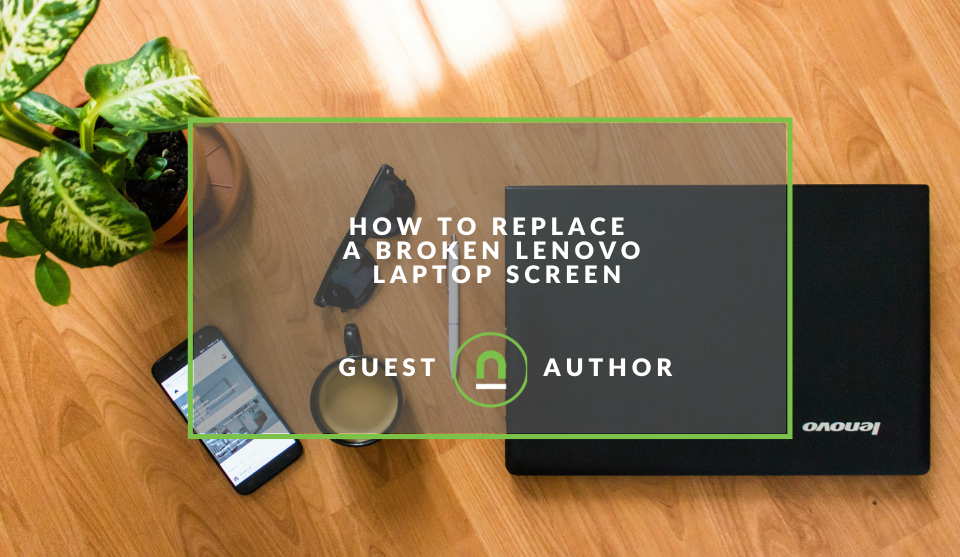Recent posts

Mind, Body & Soul
Do Not Whistle at Night: South Africas Strangest Superstitions
26 April 2025

Geek Chic
How to Replace A Broken Lenovo Laptop Screen
24 April 2025

Money Talks
Everything You Need to Know About SASSA Status Check
13 April 2025

Mind, Body & Soul
The Genetic Diversity of Cannabis Seeds
12 April 2025
Popular posts
Extravaganza
Trending Music Hashtags To Get Your Posts Noticed
24 August 2018
Geek Chic
How To Fix iPhone/iPad Only Charging In Certain Positions
05 July 2020
Extravaganza
Trending Wedding Hashtags To Get Your Posts Noticed
18 September 2018
Money Talks
How To Find Coupons & Vouchers Online In South Africa
28 March 2019
How To Setup TikTok Ad Tracking
27 January 2023 | 0 comments | Posted by Che Kohler in nichemarket Advice
TikTok has over 1.53 billion users as of 2023, and of that user base, 1 billion return to the app at least once a month to be counted as monthly active users. The app continues to grow and skews towards the younger demographic, with 885 million users aged 18 and above on TikTok.
While TikTok might be known for dancing videos and a fun place for the younger crowd to hang out and engage with their favourite influencers, it has also become a powerful marketing tool. Any platform that has direct access to an audience of 1 billion or more would become an attractive source of new customers for brands.
Today, many TikTok influencers strike up brand deals and create content for these brands, and push it through to their followers and the For You page in hopes that the ad would be picked up by ranking algorithms and provide the brand with enough reach that it was worth paying the influencer.
In the earlier days of TikTok, this was a highly profitable strategy; since TikTok was looking to poach creators from other platforms and encourage a new generation of creators loyal to their service, they provided unpredicted access to their growing audience. This allowed creators to supercharge their follower count in a short space of time and then sell this reach to brands.
As TikTok matures and the amount of content on the platform reaches a saturation point, TikTok has to become a lot pickier about what it shows users to keep them on the platform, and because of this, creators aren't getting the reach they once enjoyed. To add to the competition for views, TikTok also had to figure out ways of monetising its service, and ads were always going to be part of that strategy.
Today, creators and brands use ads either to boost their reach and following or to sell to users directly inside TikTok.
TikTok ads are all reach and have no conversion.
To encourage the uptake of TikTok ads, the platform is providing favourable serving to ads in its feeds, and many brands and creators have leveraged this to try and grow their accounts. TikTok ads are great for brand building and reach, and it's easy to get infatuated with the vanity metrics like views, engagement and followers.
If you're a brand, these are great reporting metrics, but they're not going to do much for your bottom line. If running ads is about generating new users and sales, you have to be a little more strategic.
While TikTok can give you access to a wide audience at a competitive CPM, the quality of that audience is debatable. To help brands and marketers find the right users, TikTok has followed the Facebook model and provides brands with the ability to merge their onsite data with their TikTok ad account to create a powerful marketing tech and ad tracking tool.
Time for TikTok to get serious
The TikTok pixel is a piece of code similar to that offered by other social media apps like Facebook, Linkedin, Twitter and Pinterest. It can be found in your ad account assets and installed on your website to help track TikTok users who find their way onto your website and help you push user actions and conversions to your TikTok ad account.
If you're running a TikTok ad campaign with the intention to drive new sign-ups, sales, or bookings or any kind of performance marketing, then installing a pixel and getting it to train up on your data sets is a must.
What is the TikTok pixel?
The TikTok pixel is a script that you can install on your website. Once installed, the pixel will track specific events, such as page views on your website or account creations that came from TikTok users. These events are then recorded in your TikTok Ads account so that you can see which ads are driving the most users migrating to your site or leading to the most sales.
- The TikTok pixel offers marketers a measurement tool that can help track return on investment (ROI). The TikTok Pixel can help you build ad campaigns and give you direct metrics that can help campaign refinement.
- Second, it can help you create more targeted ad campaigns by understanding which ads are performing well and which ones aren't.
- Finally, the TikTok pixel can help you create custom audiences, remarketing lists and campaigns with more personalised ads.
How to set up the TikTok pixel
If you're ready to start using the TikTok pixel, you will need to have the following:
- A TikTok Ad account
- A TikTok Account
- A website that you can either edit or Google Tag Manager access
If you have access to all three, you can follow these steps.
Create your pixel
Head over to your TikTok Business account. Sign in to your account and go to
TikTok Ads Manager > Assets > Events. Create a pixel, give it a name and follow the prompts to get the code.
Install the pixel code on your website or app
The next screen you'll see is the Set Up Web Events with TikTok Pixel screen. Here, you'll have the option to manually install your pixel or set it up automatically via a 3rd party. There are several popular eCommerce connections like Shopify and BigCommerce already available.
If you're using a custom site or a CMS that isn't supported by TikTok, you can choose to install your pixel manually, click Manually Install Pixel Code and then click Next.
Copy the pixel javascript code and then paste it into the header section of your website.
Look for a piece of code that starts with and ends with – your pixel should go right after the tag.
Alternatively, if you have Google Tag Manager, you can install your pixel by creating a custom HTML tag and pasting the code in the tag and setting it to fire on all pages.
Once you've picked your method and actioned as above, you should be all set with the basic installation!
What are TikTok pixel events?
Using the basic install, you can only track page views on your site coming from TikTok and create funnels or audiences around that. To take your ads a step further, you will need to add event monitoring for more granular tracking.
This event monitoring can be done by adding TikTok pixel events, which are the specific actions people take on your website or app.
There are fourteen types of TikTok pixel events, namely:
- Add payment info
- Add to cart
- Add to wishlist
- Click button
- Complete payment
- Complete registration
- Contact
- Download
- Initiate checkout
- Place an order
- Search
- Submit form
- Subscribe
- View content
Each type of event corresponds to a different action someone might take on your website or app. You can be as selective or as comprehensive as you like; you can install some of the custom events or all the applicable events available.
If you are going to run a comprehensive event setup, be sure that your ads are limited to the events you find most important, or you will be optimising for too many goals and sending conflicting data to campaign refinements.
Setting up campaigns based on events might also require you to set up create custom audiences based on the event actions for new ads and build out the funnels you wish to track.
How to debug your Tik Tok Pixel?
Once you've installed your TikTok pixel and set up the individual event, your last step is to test the data feeds. One way to do this is to run an ad campaign and burn your ad budget by clicking on your own ads, or you can take a simpler route and use a special plugin.
Again, TikTok has taken a page from Facebook's ad tools and created a TikTok Pixel Helper that can help you test whether your pixel is working correctly.
All you would need is a chromium compatible browser, head over to the chrome store and search for the plugin or install the TikTok Pixel Helper Chrome extension from the link provided.
Once installed, open a new tab in your browser and paste your tracking link followed by ?dbgrmrktng.
- For example - http://nichemarket.co.za/?dbgrmrktng
The TikTok Pixel Helper will then provide information on the status of your pixels. It can also show you whether your events are working and receiving data.
Contact us
If you want to know more about digital marketing or feel this entire GA thing is too much of a bother and you need it sorted by experts, then we’re happy to assist. Simply contact us, and we can sort out your data migration for you.
Are you looking to promote your business?
Business owners can create your free business listing on nichemarket. The more information you provide about your business, the easier it will be for your customers to find you online. Registering with nichemarket is easy; all you will need to do is head over to our sign-up form and follow the instructions.
If you require a more detailed guide on how to create your profile or your listing, then we highly recommend you check out the following articles.
Recommended reading
If you enjoyed this post and have a little extra time to dive deeper down the rabbit hole, why not check out the following posts about tracking?
- How To Track Social Sharing In Google Analytics
- Get Back Your Google Analytics Account With These Simple Steps
- How To Properly Set Up Google Analytics With Shopify Sites
- Google Analytics Interaction Hit Vs Non-Interaction Hit
- How To Track Video Views With Google Analytics
- How To Track Search and Zero Search Queries In Google Analytics
Tags: Digital Marketing, Online Marketing, Social Media Marketing, Tracking
You might also like
The Genetic Diversity of Cannabis Seeds
12 April 2025
Posted by Alina Jones in Mind, Body & Soul
A look into the South African heritage of cannabis growing and how the country has taken the plant in terms of growing it into a viable industry & th...
Read moreHow Small Businesses Can Leverage Blockchain Technology
02 April 2025
Posted by Nicholas Tay in Money Talks
Unlock growth with blockchain! Discover how small businesses can use this tech for secure transactions, supply chain transparency and innovative solu...
Read more{{comment.sUserName}}
{{comment.iDayLastEdit}} day ago
{{comment.iDayLastEdit}} days ago
 {{blogcategory.sCategoryName}}
{{blogcategory.sCategoryName}}
